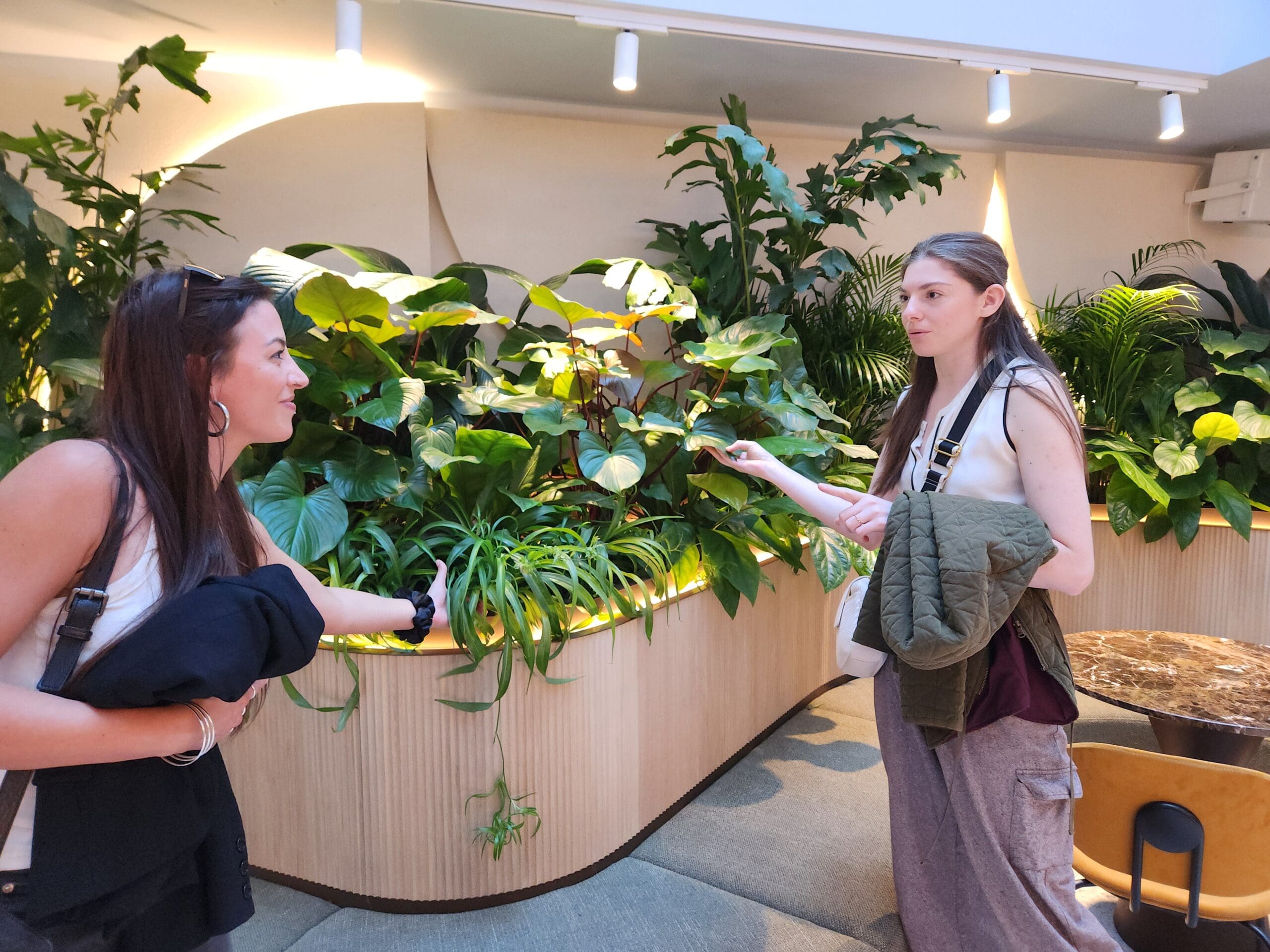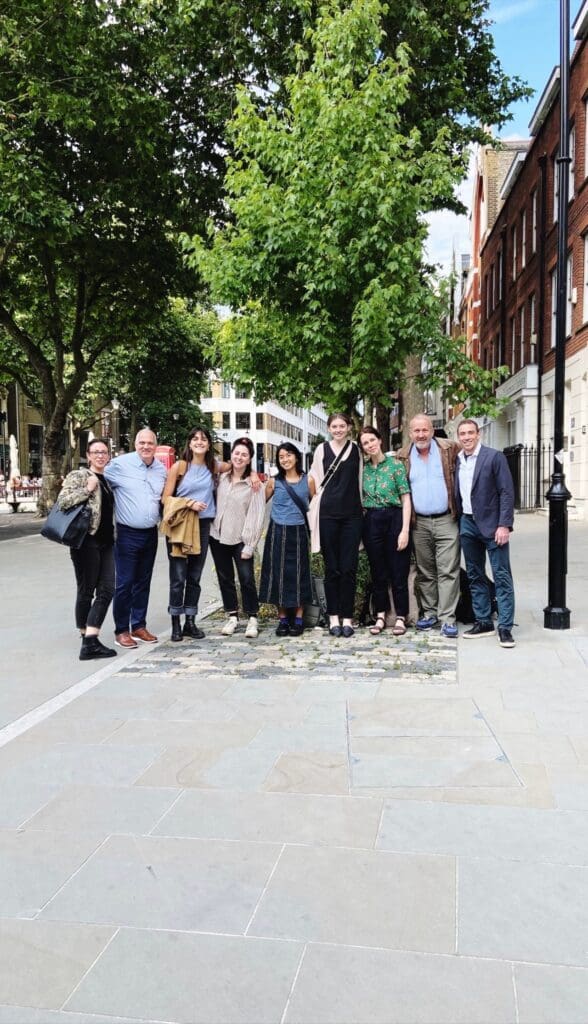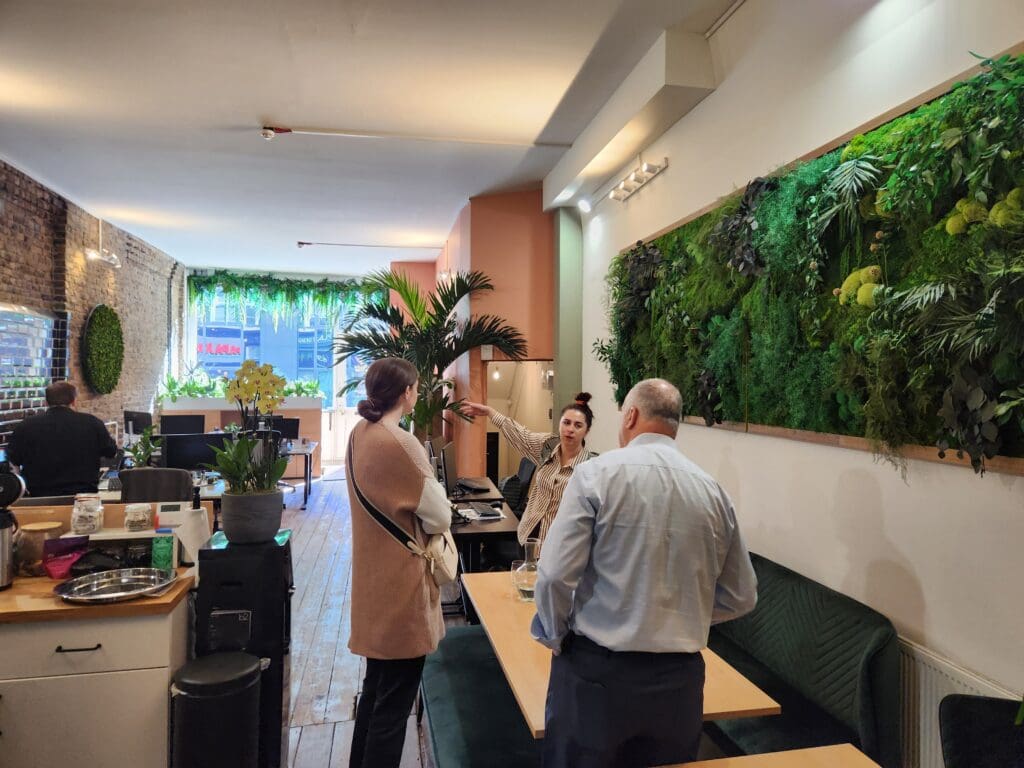
You might think of an exchange program as something college students can take advantage of while studying, but John Mini Distinctive Landscapes, based in Congers, New York, recently launched their first-ever exchange with the Plant Designs team in London, England.
Mark Mini, president of John Mini Distinctive Landscapes, says this program is the result of a years-long vision to develop an international collaboration.
“With 50 years in business, we’ve developed a strong network of proven professionals in the United States, many of which are NALP members,” Mini says. “The next step was to explore successful operation and design practices being implemented abroad.”

Mini says his father, John Mini, the founder of their company, and William Braid, the founder of Plant Designs, grew up in the indoor landscape industry and were close friends.
“After my father passed, I nurtured a friendship with William,” Mini says. “He’s a selfless leader in our industry. His willingness to befriend the next generation of players in our industry is a testament.”
Mini adds that Plant Designs was the logical first collaborator as they share many organizational values and have comparable markets.
“The John Mini team hunts down complacency,” Mini says. “This mindset drives our belief in the value of connecting with businesses across the world. There is always something we don’t know today and we’re willing to turn over every stone to learn new ways to operate or explore how we can push the limits of our craft.”
Executing The Exchange
Mini says it took them about a year to develop the program, including several virtual calls with the Plant Designs team. He says this was a challenge coordinating schedules with a five-hour time difference, and one that will increase with further international expansion.
“The other challenge was landing on specific program content within the categories of landscape design, operations, organizational structure, marketing and horticulture,” Mini says. “We needed to tailor the program to benefit both organizations. This required direct and honest conversations on what each firm hoped to improve.”

The two companies ended up crafting a structured, three-day program that ran from 8 a.m. to 6 p.m. each day.
“Presentations were delivered on broad design trends, design case studies, and marketing initiatives,” Mini says. “Open discussions were held on organizational structure designs and leadership styles.”
Plant Designs also hosted landscape tours, which prompted discussions on horticulture and design. Mini says they visited six different indoor landscapes.
“Workspaces in London are investing heavily in built-in joineries with plants as the main feature,” Mini says. “These provide amenities within workspaces that induce collaboration and socialization.”
He says one impressive landscape featured a wild and densely planted aesthetic that was achieved without utilizing an unmanageable variety of plants from a service standpoint.
The John Mini team sent three employees, including Mini.
“Each teammate had a specific role and was responsible for soliciting research requests from teammates across all divisions,” Mini says. “A lean group of participants with a responsibility to the greater team was by design. It sharpened the focus of participants and was mindful of company resources and expense.”
Mini represented ownership and led discussions on marketing, long-term growth strategies and leadership. Rich Pantano, VP of finance for John Mini, led all operations and organizational structure conversations, while Sam Barrett, design manager for John Mini, led the design presentations.
Plans For the Future
Since John Mini visited London in June this year, the Plant Design team will visit their operations in New York in the spring or summer of 2025.
“This program will happen once a year,” Mini says. “It will expand as we selectively invite firms in other international markets to the program.”
Mini notes that this program is an incredible value for their clients as well.

“We serve a lot of clients that have an international footprint,” Mini says. “Expanding our network internationally provides us with more resources to serve these clients”
For instance, Barrett began working with a prospective client opening an office in New York, which is an expansion from their London headquarters a few months prior to the exchange trip.
“She connected the dots and scheduled a tour of the prospective clients’ HQ in London, providing her additional insights to better serve the project development in New York,” Mini says.
He says their learnings also give them insights into landscape trends abroad that they can bring to their clients in New York.
Mini says an exchange program is a game changer but it requires patience and commitment.
“Forming genuine relationships with industry colleagues takes time and not every encounter will present learnings you can implement immediately,” Mini says. “It’s all about expanding your knowledge and finding the right time to make adjustments within your organization.”
He adds this program is all about paying it forward.
“You must enter such endeavors selflessly and with a willingness to share,” Mini says. “I know those in NALP share this mindset: we love what we do, and we know our work has immense value. The better we all get at our craft, the more value we’ll deliver and the more value we create for our industry.”

